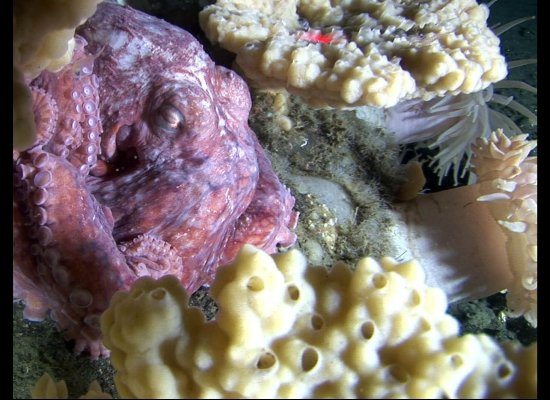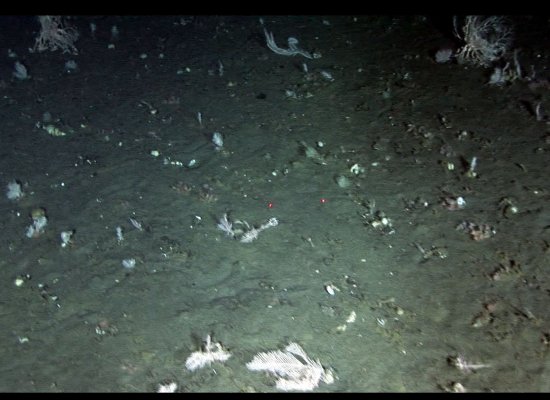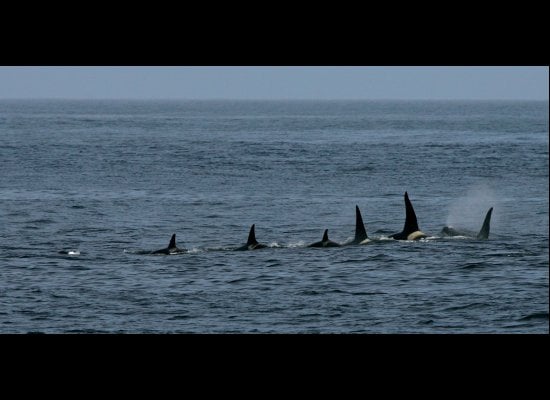I just sat through four painstaking days of the North Pacific Fishery Management Council (NPFMC) meeting in Anchorage, Alaska. Luckily for meand my sanity I only had to endure four out of meeting’s eight days.
This NPFMC is tasked with fishery management and conservation of marine ecosystems in the North Pacific Ocean off of Alaska, an area that belongs to the United States of America. The Councils vision statement seems pretty commendable to me. It talks about sustainable fisheries, the need to maintain healthy, productive, resilient ecosystems that support robust populations of marine species, and it states that fisheries should be managed using a precautionary, transparent, and inclusive process.
So what was Greenpeace doing at the talks?
The Bering Sea boasts some incredible marine life. It is also boasts two of the worlds largest underwater canyons: the Pribilof and Zhemchug canyons. These canyons support a high diversity of marine life, from ancient deep-sea corals to a myriad of fish species that are long-lived and vulnerable to over-exploitation. We have only just begun to understand what lives in them.
In fact Greenpeace pioneered the exploration of the canyons by sending two submersibles down into them in 2007. We even discovered a species of sponge new to science.
The Bering Sea is also one of the worlds most productive and lucrative fishing grounds. Large volumes of popular and commercially valuable fish, such as pollock, Pacific cod, and halibut, are caught there. Mostly this is carried out using extremely destructive methods, like bottom trawling, which literally scrapes the ocean floor and destroys everything in its path.
Bottom trawling really is like clear-cutting an ancient rainforest for the sake of catching a few deer.
The theres long-lining, which also damages corals and sea floor habitat. Both these techniques result in indiscriminate bycatch, the wasteful killing of all sorts of animals not actually targeted by the fishery. Once you destroy a deep-sea coral, it wont come back for tens to hundreds of years, if at all.
Greenpeace and our allies have been working to get these canyons protected from the onslaught of destructive fishing gear and climate change for over a decade now. New science, modeling, and public sentiment are all pointing to the same thing. If we want to ensure a productive fishery well into the future we must set areas for protection aside now.

Greenpeace Oceans campaigners John Hocevar and Jackie Dragon get ready to dive in a two-seater submersible craft on loan from the Waitt Institute.
I am new to the politics of ocean conservation in the USA. I am usually based in the Netherlands, where I work for Greenpeace International. Working in Europe, I have had the ample displeasure of witnessing first hand how international bodies like the UN, regional fisheries management organizations, or the European Union go about failing to protect our oceans and the animals that live in them.
Its not like the science is in dispute. Close to 80 percent of global fish stocks are in a poor state as a direct result of over-fishing. Add to that pollution, deep-seabed mining, ocean acidification, and climate change it is time to give our oceans a break. To recover, replenish, build resilience, and ensure bounty from our oceans for future generations, we need to establish ocean sanctuaries.
The USA is perceived to be a global leader when it comes to managing and protecting ocean resources. Not long ago, I was in Tasmania, Australia for the annual international meeting to conserve marine life in Antarctica. Acting like a leader, the US proactively pushed for the protection of the Ross Sea.
I came to Alaska hearing that the NPFMC is ahead of all others in the US. Naively, I hoped I might actually get to witness some meaningful progress. If the US is so good to the Antarctic an area shared by the global community surely they would prize life in its very own Bering Sea?
Sadly, I was wrong. As is the case with every other management meeting I have been to, the fishing industry maintained a stranglehold on decision-making at the Bering Sea talks. Despite irrefutable observational data on the incredible life forms that thrive in the Berings canyons and their vulnerability; despite scientific modeling (which managers find perfectly adequate for determining catch quotas); and despite the calls of millions of public stakeholders, including the Native communities of Alaska who depend on a healthy Bering Sea for their livelihoods, the Council has decided to kick the can well in to 2016 before taking any meaningful action. Until then the industrial trawlers and long-liners will keep destroying what essentially belongs to all of us: our common heritage.
I walk away from this meeting more determined than ever to help my colleagues in the US explore new avenues for raising the urgency for action. If they wont listen to science then theyll have to listen to Greenpeace supporters like you! If you want to make a difference, tell your local seafood restaurant or supermarket to stop selling fish from the Bering Sea Canyons. And sign our global petition to establish ocean sanctuaries around the world.





